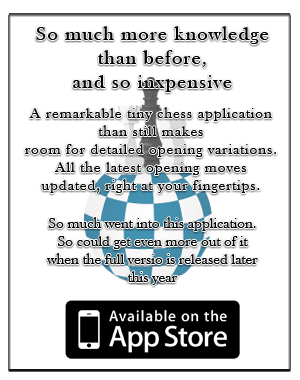TIME CONTROL
The first who were tough about time limitation were apparently St. Amand (Palmede 1836 p. 189) and Von der Lasa, who revived the idea in 1852. It was in Paris 1867 that the hour-glasses were first used. The limitation of time for an official game was first introduced in 1861 for the match between Anderssen and Kolisch to avoid unlimited time play, but it was in Paris 1867, that the hour-glasses were first used followed by a mechanical clock and recently by a digital clock. For classical chess, FIDE has adopted for its competitions 90 minutes plus an increment of a few seconds per move; however, many tournaments still use the popular 40 moves in 2 hour and one hour to finish the game. The Rapid Chess uses 25 minutes and an increment of a few seconds per move, and in Blitz Chess, each player has usually five minutes to finish the game.
The time controls used:
| 1861 | Anderssen-Kolisch | 24 moves in 2 hours (hour-glass) |
| 1866 | Anderssen-Steinitz | 20 moves in 2 hours |
| 1883 | London | 15 moves per hour |
| 1867 | Dundee | 30 moves in 2 hours |
| 1870 | Baden-Baden | 20 moves in 1 hour |
| 1876 | Blackburne-Steinitz | 30 moves in 2 hours |
| 1882 | Vienna | 15 moves in 1 hour |
| 1883 | London | 15 moves in 1 hour |
| 1895 | St. Petersburg | 30 moves in 2 hours |
| 1899 | London | 15 moves in 1 hour |
| 1900 | Paris | 30 moves in 2 hours, then 15 moves per hour |
| 1908 | Lasker-Tarrasch | 15 moves in 1 hour |
| 1909 | St. Petersburg | 37 moves in 2½hours |
| 1911 | San Sebastian | 15 moves in 1 hour |
| 1922 | Hastings | 17 moves in 1 hour |
| 1927 | New York | 40 moves in 2½ hours |
| 1986 | Dubai | 40 moves in 2 hours |
| 1997 | Groningen | 40 moves in 100 minutes, 20 moves in 50 minutes, all the moves in 10 minutes plus 30 seconds per move, accumulative from the first |
| 2000 | all the moves in 90 minutes plus 30 seconds per move, accumulative from the first | |
| 2004 | 40 moves in 90 minutes, all the remaining moves in 15 minutes, plus 30 seconds per move accumulative from the first |



